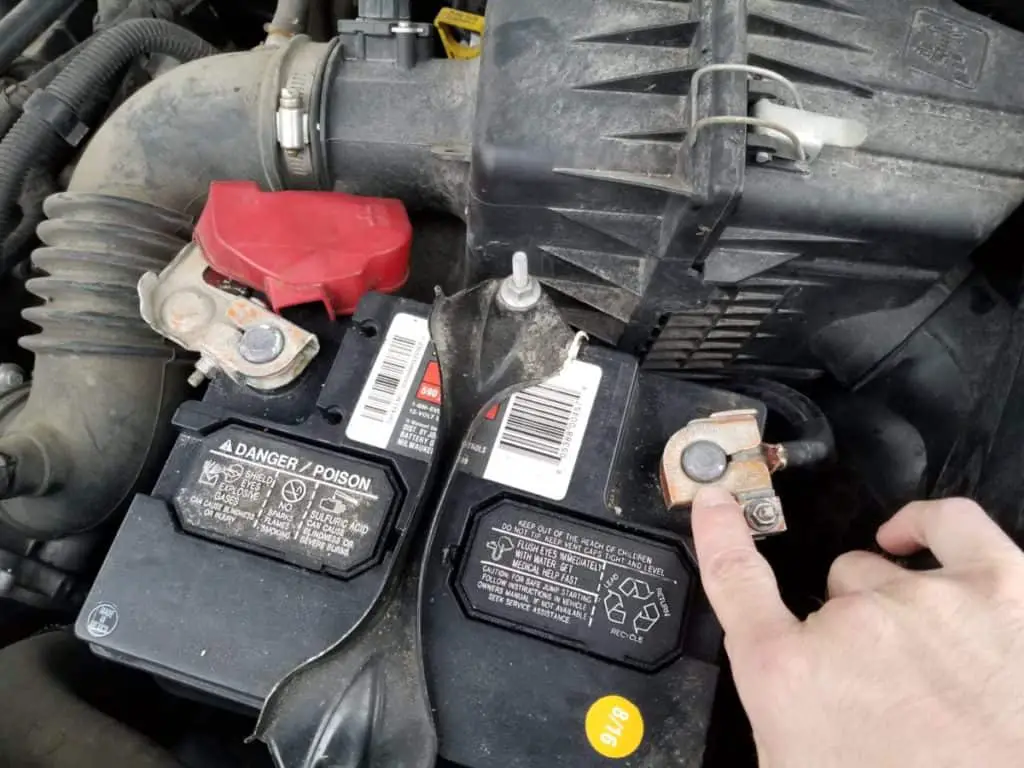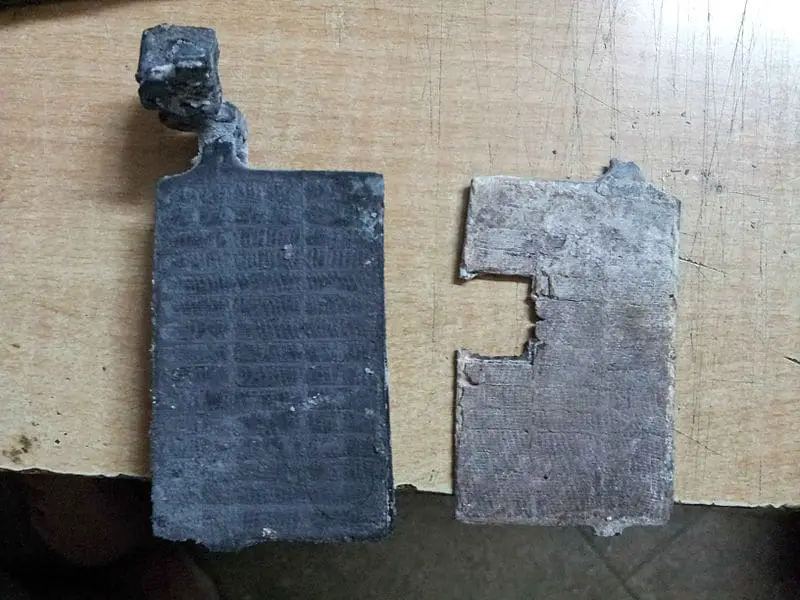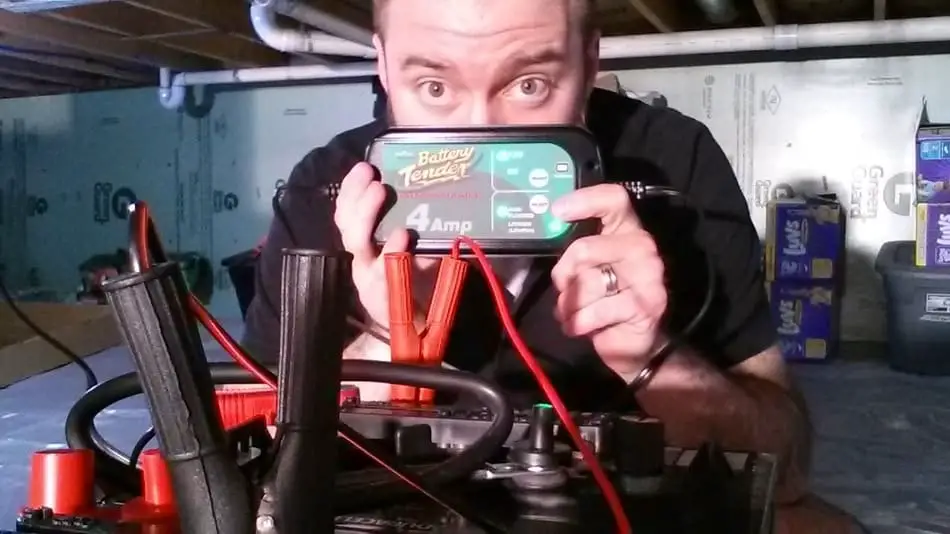If you’re going on vacation or you don’t plan on using your car for a few weeks or months, you’ve probably heard that you should disconnect the negative cable on your car’s battery to prevent it from draining.
Once that’s done you should be good to go right?
Not so fast.
A car battery will naturally “self-discharge” at a rate of 5-15% per month with the negative cable disconnected but is the best option for long-term parking if you cannot hook it up to a charger. Leaving the battery hooked up will drain it at 20% or more per week.
In this article I’ll dive into how a car battery will still lose some of its charge despite disconnecting the negative cable and best practices for keeping your battery ready to go when you returned to your vehicle.
Let’s get stated!
| Battery Storage Method | Rating | Time Until Battery is Dead |
|---|---|---|
| Leave Battery hooked up and attach a Float Charger | Best | Battery Will Not Die |
| Disconnect the Negative Cable from the Terminal | Good | 6-18 Months |
| Leave Battery Hooked up without a float charger | Bad | 2-4 Weeks |
Why a Car Battery Loses Charge Despite Disconnecting the Negative Cable
Like I mentioned above, simply disconnecting the negative cable is not enough to stop your battery from losing charge.
Don’t get me wrong, it is definitely better than nothing and it will go a long way in preserving your battery’s charge while you’re away.

There’s something that every battery undergoes and that is called self-discharge. You’re probably familiar with that when you buy a pack of AA batteries and it will say something like “Will keep 90% of its charge after 5 years”.
If you weren’t using the battery for those 5 years, where did the 10% go?
The answer is self-discharge.
When a battery is not connected to a smart charger on float mode, which essentially keeps it at a perfect 100% state of charge, then it will undergo self-discharge. Self discharge means that your battery is chemically reverting from a state of charge to a state of discharge because that is technically easier for the batteries chemistry and that’s where it naturally wants to be.
The rate at which your battery does this is dependent upon the type of battery that you have, and car starter batteries (whether they are sealed or flooded) are categorized as lead-acid batteries.
Healthy lead-acid batteries typically will self-discharge around 5% each month that they are not being used and not hooked up to anything.
Those numbers are derived from Progressive Dynamics’ website and Battery University’s website.
I believe those numbers take into account a new battery with perfect health and at room temperatures.
I believe that batteries will lose about 5-15% on average per month, but I’ve also read accounts of them dropping as much as 30% in a month. A healthy battery will be on the lower end of the range, and an older battery will likely be on the higher end.
However, you also need to consider the age, number of cycles the battery has been through, the ambient temperature, and the amount of sulfation that has built up inside the battery. It is possible that the sulfation is causing an internal short within one of the cells.
Back to the main topic.
When you disconnect your negative terminal and only the positive is connected then the circuit is no longer complete, but it still slowly succumbs to self-discharge. If you were to leave both cables hooked up, your car would likely be dead after about 2 to 4 weeks due to “parasitic draw”.
Parasitic draw is all of the computer systems on modern cars that will draw energy from your battery even though your car is turned off. Things like your anti-theft system, the clock radio presets, and much more slowly sip away at the battery to keep their settings even though your car is powered down.
| Reason Battery Is Draining | How Fast will a Car Battery Drain |
|---|---|
| Parasitic Draw | 20%+ Per Week |
| Self-Discharge | 5-15% per Month, depending on age and health of battery |
Either way you slice it, the car battery is going to drain and drop in charge if it’s not connected to a charger.
Don’t get me wrong, disconnecting the negative terminal on your battery is definitely a going to prolong the battery’s eventual demise and will certainly get much more time out of it.
If you started with a full charge on your battery and you left the battery connected, you’d only have 2 to 4 weeks depending on the make and model of your car. In that same you’d only lose about 5-15% charge by just disconnecting the negative terminal.
Clearly, if you didn’t have a charger, then disconnecting the negative terminal would be the best scenario.
If you were leaving for a month or two (or even longer) and lost 5-25% of your battery’s charge to self discharge, you might think that that’s not too bad. After all, you’ll still have enough juice to start your vehicle and it’ll top right off again, right? Yes and no.
That leads us into our next topic.
Sulfation is the #1 Enemy of Your Car Battery
The tricky part about any battery losing its charge, is that it starts to immediately sulfate and the further you go into a state of discharge the faster it will sulfate.
Battery sulfation is when the lead plates inside of your battery get coated with lead sulfate crystals (a white coating) due to the chemical reactions during the state of discharge.
This coating of sulfation is soft at first and if addressed promptly it can be flaked off your battery’s plates by recharging. Deep-cycle batteries have a protective alloy on the plates that is more forgiving, whereas car starter batteries can be permanently damaged to one degree or another regardless of whether or not you recharge them immediately. That’s why car batteries can only be deep-discharged about a dozen times before they will no longer hold a charge, and deep-cycle batteries can do hundreds.
However, if a battery sits in a state of discharge for an extended period of time, then this sulfation begins hardening into a crystallized state and it becomes nearly impossible to get off of your lead plates — especially car starter batteries.

These sulfate crystals increase the internal resistance of your battery which means that it’s harder to actually charge it, and your battery is not as efficient at releasing current once it’s demanded.
Each and every time you discharge the battery the sulfates build-up to a point where they can actually bridge the gap between the plates which will cause an internal short and kill your battery, or they can simply cover the plates enough that your battery is rendered ineffective.
Best Way to Maintain a Battery When Not in Use
The most ideal way of maintaining a battery when you are not going to be using it is to connect your battery to a float charger while you are away. When using any modern charger, there is no need to disconnect the negative terminal of the battery.
A float charger will keep the battery topped off at 100% without overcharging it. This ensures that it’s ready to rock when you get back, and it also makes it impossible for lead sulfate crystals to form on the plates and damage your battery.
| Battery Storage Method | Rating | Time Until Battery is Dead |
|---|---|---|
| Leave Battery hooked up and attach a Float Charger | Best | Battery Will Not Die |
| Disconnect the Negative Cable from the Terminal | Good | 6-18 Months* |
| Leave Battery Hooked up without a float charger | Bad | 2-4 Weeks |
This charger and maintainer, seen on Amazon, I have used for over 8 years on a daily basis for a battery bank and I also charge my car batteries on a monthly basis to keep them in an optimum state since I don’t trust the alternator to give them a healthy charge.

This is a true “set it and forget charger”. You simply hook up the red cable to the positive terminal and the black cable to the negative terminal and that’s it. The charger will bring your battery to a full charge and then enter a “float” state will keep your battery perfectly topped off at 100% indefinitely. You can leave this on for months and be good to go.
Why Do We Disconnect the Negative Terminal of the Battery?
I won’t get into this topic too deeply, but you might be wondering why we disconnect the negative instead of the positive terminal of the battery when we won’t be driving for a while.
The reason is that your car battery’s negative terminal is connected directly to the chassis (frame) of your car.
All of the negative posts of the electronics on your vehicle are attached directly to the chassis.
Only the positive cable from your car carries wires directly to your vehicle’s electronics.
Remember that electricity needs a completed circuit to flow.
The electricity will flow from the battery’s positive terminal, through the red wires, to your electronics, out of the electronics directly to the car’s chassis, and from the chassis it will pass through the black cables back to the negative terminal.

The reason we disconnect the negative terminal (first) is because if we’re using a metal wrench to remove the battery cables from the terminal and the handle of the metal wrench touches and of the metal parts of the vehicle under the hood, then nothing will happen.
Conversely, if we were to remove the cables from the positive terminal first and we accidentally touched the metal wrench to any of the metal parts under the hood, we would immediately complete the circuit and create a direct short since we now have a completed path from the battery’s positive terminal, through the wrench to the chassis, and from the chassis back to the negative terminal.
The wrench will immediately become too hot to hold, and the battery will likely catch fire or explode due to the rapid discharge without resistance.

